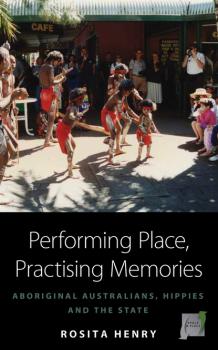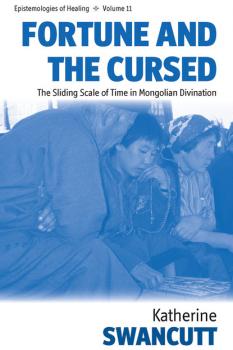ТОП просматриваемых книг сайта:
Культурология
Различные книги в жанре Культурология, доступные для чтения и скачиванияАннотация
Providing a comprehensive treatment of a full range of migrant destinies in East Asia by scholars from both Asia and North America, this volume captures the way migrants are changing the face of Asia, especially in cities, such as Beijing, Hong Kong, Hamamatsu, Osaka, Tokyo, and Singapore. It investigates how the crossing of geographical boundaries should also be recognized as a crossing of cultural and social categories that reveals the extraordinary variation in the migrants’ origins and trajectories. These migrants span the spectrum: from Korean bar hostesses in Osaka to African entrepreneurs in Hong Kong, from Vietnamese women seeking husbands across the Chinese border to Pakistani Muslim men marrying women in Japan, from short-term business travelers in China to long-term tourists from Japan who ultimately decide to retire overseas. Illuminating the ways in which an Asian-based analysis of migration can yield new data on global migration patterns, the contributors provide important new theoretical insights for a broader understanding of global migration, and innovative methodological approaches to the spatial and temporal complexity of human migration.
Аннотация
What can anthropology and political science learn from each other? The authors argue that collaboration, particularly in the area of concepts and methodologies, is tremendously beneficial for both disciplines, though they also deal with some troubling aspects of the relationship. Focusing on the influence of anthropology on political science, the book examines the basic assumptions the practitioners of each discipline make about the nature of social and political reality, compares some of the key concepts each field employs, and provides an extensive review of the basic methods of research that “bridge” both disciplines: ethnography and case study. Through ethnography (participant observation), reliance on extended case studies, and the use of “anthropological” concepts and sensibilities, a greater understanding of some of the most challenging issues of the day can be gained. For example, political anthropology challenges the illusion of the “autonomy of the political” assumed by political science to characterize so-called modern societies. Several chapters include a cross-disciplinary analysis of key concepts and issues: political culture, political ritual, the politics of collective identity, democratization in divided societies, conflict resolution, civil society, and the politics of post-Communist transformations.
Аннотация
Dance is more than an aesthetic of life – dance embodies life. This is evident from the social history of jive, the marketing of trans-national ballet, ritual healing dances in Italy or folk dances performed for tourists in Mexico, Panama and Canada. Dance often captures those essential dimensions of social life that cannot be easily put into words. What are the flows and movements of dance carried by migrants and tourists? How is dance used to shape nationalist ideology? What are the connections between dance and ethnicity, gender, health, globalization and nationalism, capitalism and post-colonialism? Through innovative and wide-ranging case studies, the contributors explore the central role dance plays in culture as leisure commodity, cultural heritage, cultural aesthetic or cathartic social movement.
Аннотация
Examining the way people imagine and interact in their cities, this book explores the post-cosmopolitan city. The contributors consider the effects of migration, national, and religious revivals (with their new aesthetic sensibilities), the dispositions of marginalized economic actors, and globalized tourism on urban sociality. The case studies here share the situation of having been incorporated in previous political regimes (imperial, colonial, socialist) that one way or another created their own kind of cosmopolitanism, and now these cities are experiencing the aftermath of these regimes while being exposed to new national politics and migratory flows of people.
Аннотация
During the 1970s a wave of ‘counter-culture’ people moved into rural communities in many parts of Australia. This study focuses in particular on the town of Kuranda in North Queensland and the relationship between the settlers and the local Aboriginal population, concentrating on a number of linked social dramas that portrayed the use of both public and private space. Through their public performances and in their everyday spatial encounters, these people resisted the bureaucratic state but, in the process, they also contributed to the cultivation and propagation of state effects.
Аннотация
The longing for authenticity, on an individual or collective level, connects the search for external expressions to internal orientations. What is largely referred to as production of authenticity is a reformulation of cultural values and norms within the ongoing process of modernity, impacted by globalization and contemporary transnational cultural flows. This collection interrogates the notion of authenticity from an anthropological point of view and considers authenticity in terms of how meaning is produced in and through discourses about authenticity. Incorporating case studies from four continents, the topics reach from art and colonialism to exoticism-primitivism, film, ritual and wilderness. Some contributors emphasise the dichotomy between the academic use of the term and the one deployed in public spaces and political projects. All, however, consider authenticity as something that can only be understood ethnographically, and not as a simple characteristic or category used to distinguish some behaviors, experiences or material things from other less authentic versions.
Аннотация
Amazonia and Siberia, classic regions of shamanism, have long challenged ‘western’ understandings of man’s place in the world. By exploring the social relations between humans and non-human entities credited with human-like personhood (not only animals and plants, but also ‘things’ such as artifacts, trade items, or mineral resources) from a comparative perspective, this volume offers valuable insights into the constitutions of humanity and personhood characteristic of the two areas. The contributors conducted their ethnographic fieldwork among peoples undergoing transformative processes of their lived environments, such as the depletion of natural resources and migration to urban centers. They describe here fundamental relational modes that are being tested in the face of change, presenting groundbreaking research on personhood and agency in shamanic societies and contributing to our global understanding of social and cultural change and continuity.
Аннотация
Innovation-making is a classic theme in anthropology that reveals how people fine-tune their ontologies, live in the world and conceive of it as they do. This ethnographic study is an entrance into the world of Buryat Mongol divination, where a group of cursed shamans undertake the ‘race against time’ to produce innovative remedies that will improve their fallen fortunes at an unconventional pace. Drawing on parallels between social anthropology and chaos theory, the author gives an in-depth account of how Buryat shamans and their notion of fortune operate as ‘strange attractors’ who propagate the ongoing process of innovation-making. With its view into this long-term ‘cursing war’ between two shamanic factions in a rural Mongolian district, and the comparative findings on cursing in rural China, this book is a needed resource for anyone with an interest in the anthropology of religion, shamanism, witchcraft and genealogical change.
Аннотация
Scholarship related to environmental questions in Latin America has only recently begun to coalesce around citizenship as both an empirical site of inquiry and an analytical frame of reference. This has led to a series of new insights and perspectives, but few efforts have been made to bring these various approaches into a sustained conversation across different social, temporal and geographic contexts. This volume is the result of a collaborative endeavour to advance debates on environmental citizenship, while simultaneously and systematically addressing broader theoretical and methodological questions related to the particularities of studying environment and citizenship in Latin America. Providing a window onto leading scholarship in the field, the book also sets an ambitious agenda to spark further research.
Аннотация
“Shared” sites, where members of distinct, or factionally opposed, religious communities interact—or fail to interact—is the focus of this volume. Chapters based on fieldwork from such diverse sites as India, Nepal, Sri Lanka, China, Turkey, Morocco, Tunisia, and Vietnam demonstrate how sharing and tolerance are both more complex and multifaceted than they are often recognized to be. By including both historical processes (the development of Chinese funerals in late imperial Beijing or the refashioning of memorial commemoration in the wake of the Vietnam war) and particular events (the visit of Pope John Paul II to shared shrines in Sri Lanka or the Al-Qaeda bombing of an ancient Jewish synagogue on the Island of Djerba in Tunisia), the volume demonstrates the importance of understanding the wider contexts within which social interactions take place and shows that tolerance and intercommunalism are simultaneously possible and perpetually under threat.










